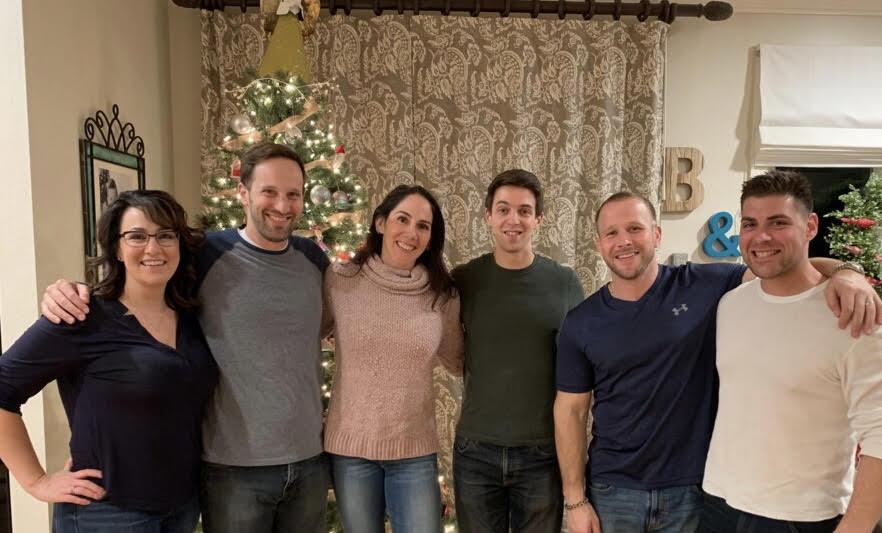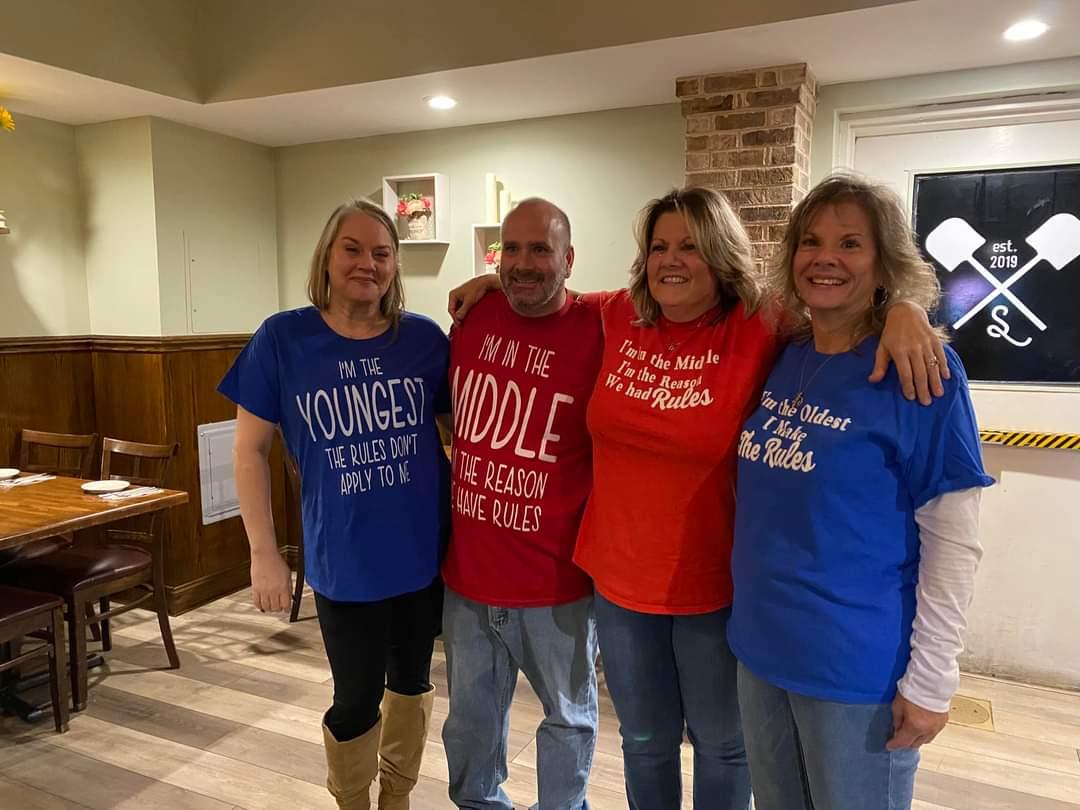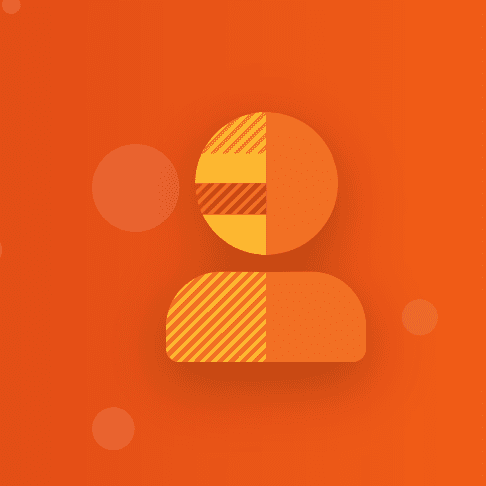By Rachael Rifkin
Buried in our DNA along with our health histories, is the story of our families. 
Shauna tested to learn more about her health history, and found herself instead in the middle of the plot of a movie (The Delivery Man, to be exact). Thoughts about potential susceptibilities to diseases receded as she discovered first one, then eight, and now at least 29 donor siblings.
As someone who grew up as an only child and really owned that identity, receiving an email that began “It looks like we are related” was pretty disorienting.
“I remember looking at the email and thinking, ‘Oh my god, what is happening? What happened?’’ Shauna said.
Diblings
Shauna and her donor siblings are “diblings”— siblings with different mothers, conceived using the same donor father. To ease the transition from only child or sibling to dibling, they created a Facebook group for themselves. One of Shauna’s half brothers even made a packet of information so that every time a new dibling is found. The packets ensures that there’s a ready source of answers for the most obvious questions. Still, Shauna and her brothers and sisters know it’s overwhelming at first, so once the basics have been supplied, they purposely give new siblings space, waiting on them to reach out for more contact.
At this point, Shauna has known about her brothers and sisters for over a year, but it never ceases to be a little weird. It’s also exciting to meet strangers with whom you share so much DNA. This is especially the case when you end up connecting deeply with new found siblings, as she has. For Shauna, the experience has largely been about identity and connection.
First Steps
She first began to reexamine her thoughts on identity at the age of 27 when she found out she was conceived through a sperm donor.
“I was having what now I think were stress-related health issues, and was asking a lot of questions about my blood type and genetic history,” Shauna said. “My mom wanted me to take the correct information to the doctors. So she had a conversation with my dad and they decided to tell me about the sperm donor.”
Her dad was a paraplegic but it never occurred to Shauna that he might not be her biological father. She points out that when you assume your parents are your biological parents, you don’t really want to question that.
So Shauna was shocked when during a visit with her mom and stepdad, her mom took her out for coffee and told her the news.
“It was mind blowing to me at the time,” Shauna said “I didn’t really fully absorb it; I don’t know that you ever fully emotionally absorb something like that. You think your parent is your biological parent and you have a relationship with them. Whether it’s a good relationship or a bad one—and my relationship with my dad was rocky—it’s still a piece of who you are. Your family is such a big part of who you are, how your personality is formed and how you navigate the world, and when you feel like part of that identity has changed, you can feel super disconnected from yourself.”

Shauna, left, and five of her 29 donor siblings.
Defining Family
Shauna had already redefined the way she saw family several times over the years. Her parents divorced when she was two and they both remarried. Her stepdad became the father figure she needed. She was naturally social, and thought of some of her friends as siblings and would call their parents Mom and Dad. She considers herself fortunate to have already had a fluid definition of family in place when she learned about being donor conceived.
It was years later, in 2013, that she tested with 23andMe and her Ancestry Composition showed she had Southern European, Native American, and Eastern European ancestry. Some of that did make sense. She already knew her mom’s side was Mexican, which explained the Southern European and Native American ancestry. But it was the Eastern European ancestry that was a bit of a mystery. Still she didn’t dive back into her results until May of 2017 when her stepdad mentioned that 23andMe had gotten FDA approval for some of their genetic health predisposition reports. This time, she decided to change her profile from anonymous to Shauna H., which made it easier for DNA Relatives on the site to connect with her.
Making the Connections
She got that first email from her brother the next day. After reading the email, she took a much closer look at what 23andMe had uncovered about her heritage. She found out she was 49 percent Ashkenazi Jewish, a discovery she had no cultural reference for as someone who wholeheartedly identifies with her Mexican side.
About a week or two later she met one of her new found sisters in person.
“She was the first one I met, so seeing how much we looked alike extra overwhelmed me,” Shauna said. “Because of what I do for a living, I’ve seen myself on video a lot and know what I look like when I talk. To watch someone else’s mouth move like my mouth moves was very weird. As an only child, I didn’t have a relative who was my age or who looked that much like me, and now I do.”
Next, she and three other siblings met up with a half brother who was in town from Israel. After that, the siblings kept rolling in. Many of them live in the San Francisco Bay area near the two clinics where they were conceived. Their largest gathering so far has included eight siblings.
Nature and Nurture
One of the most interesting and surreal parts of all this is the similarities among the siblings, Shauna said. One of Shauna’s brothers has a daughter who looks like another brother. And that same brother has a son who looks a lot like one of their youngest siblings. Beyond the physical similarities, there are also shared traits. For instance, quite a few siblings are engineers. Many have a dry and nerdy sense of humor. But as Shauna points out, it’s hard to attribute the similarities to nature or nurture. Many grew up in the same Northern California region that, as she says, “tends to be a very nurturing place for that kind of personality.”
She is closest to a sister and two brothers. They were all born the same year. In fact, Shauna and her sister are two and a half weeks apart. The two brothers are only two days apart. She talks to them frequently and they often get together to watch sports.
Another reason for the sense of familiarity and community between the siblings—their shared experience. They’re the only people in their lives who know what it feels like to suddenly gain many, many new siblings as an adult.
“There’s no guidemap for something like this. We’re just trying to figure it out,” she said.
Identity
For Shauna, this experience has really illustrated how connected we all are.
“There’s a connection we have because we share DNA,” Shauna said. “But there’s also a shared connection because we’re all human beings and we’re all more alike than we are different. People are from places they don’t realize, and we often go off of verbal history with no evidence. That is, until you actually have some evidence.”
She is currently writing a book on the role of the self and identity in who you are and how you navigate the world, including your health.
“We’re so disconnected from our bodies and who we are,” Shauna said. “And when something like this happens to you—when you find out who you thought you were is not who you are—it changes your identity, at least externally. I loved being an only child and never wanted siblings.”
But the universe had other plans, she said.
“It’s through being extremely connected to who I am internally, which for me is through my body and movement, that has allowed me to stay true to who I am,” Shauna said.
Rachael Rifkin’s work focuses on bridging the gap between generations, cultures and backgrounds. Rachael’s writing concentrates on our similarities and listening to each other’s stories. She helps people write their ethical wills and life stories. Her work incorporates family stories, and once recreated photos of eight of her relatives in order to highlight shared family traits and stories.




